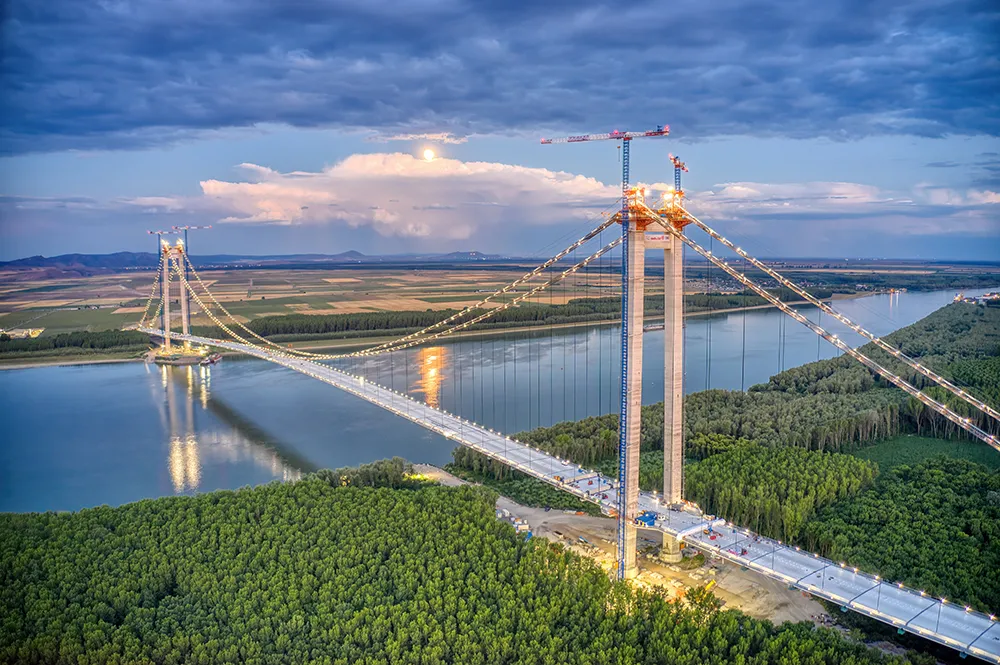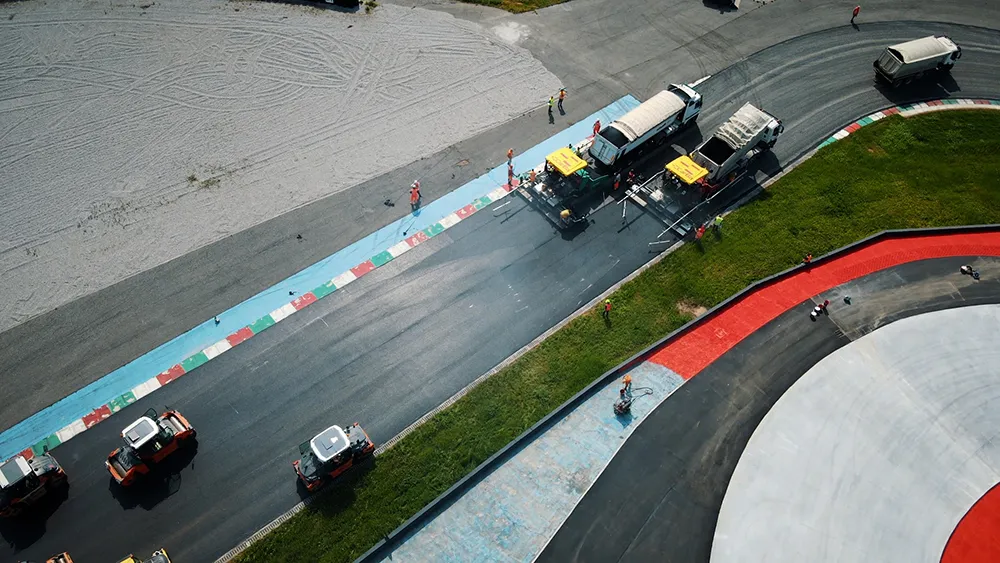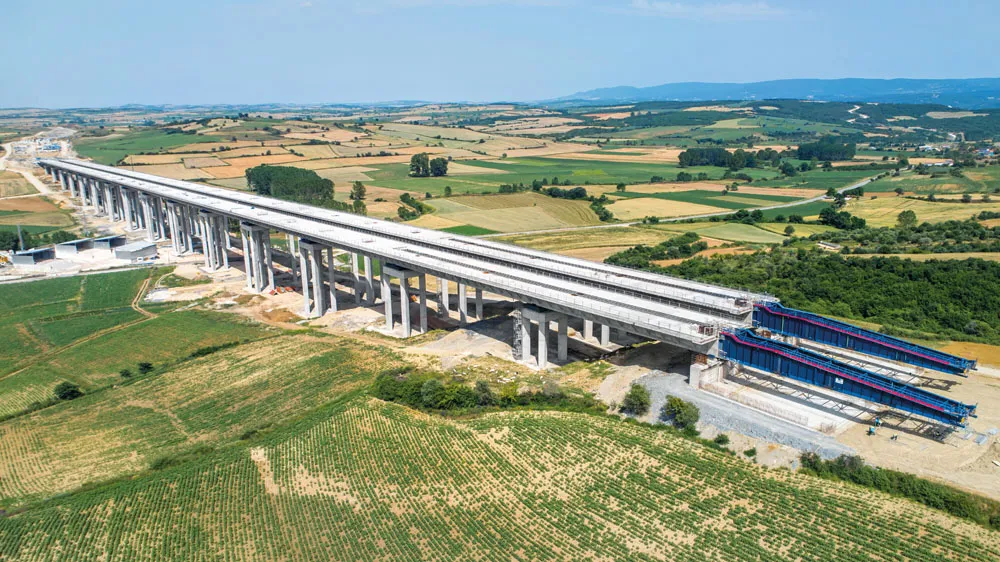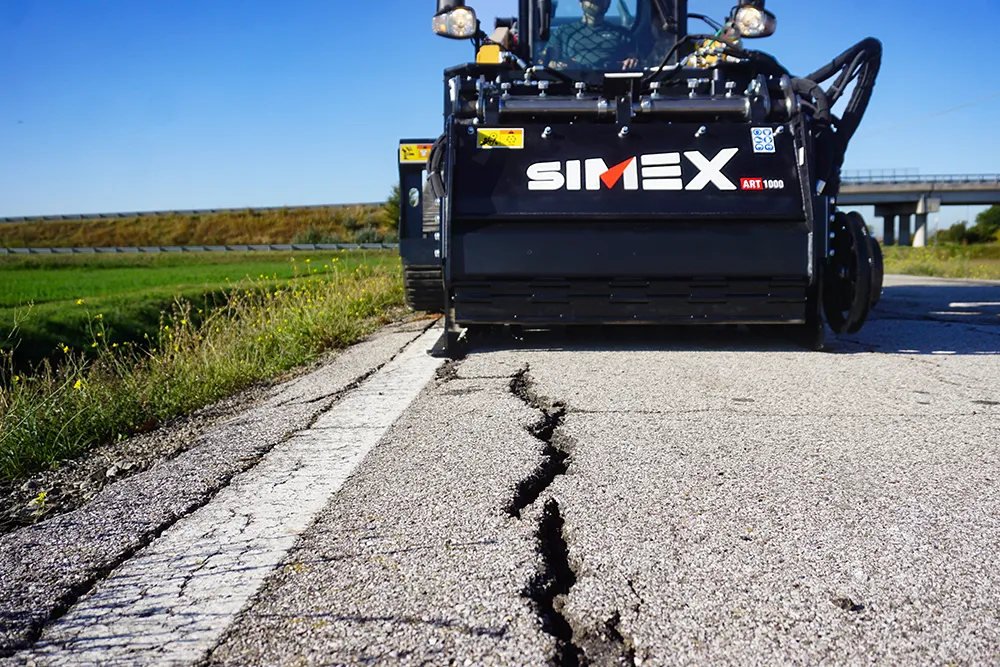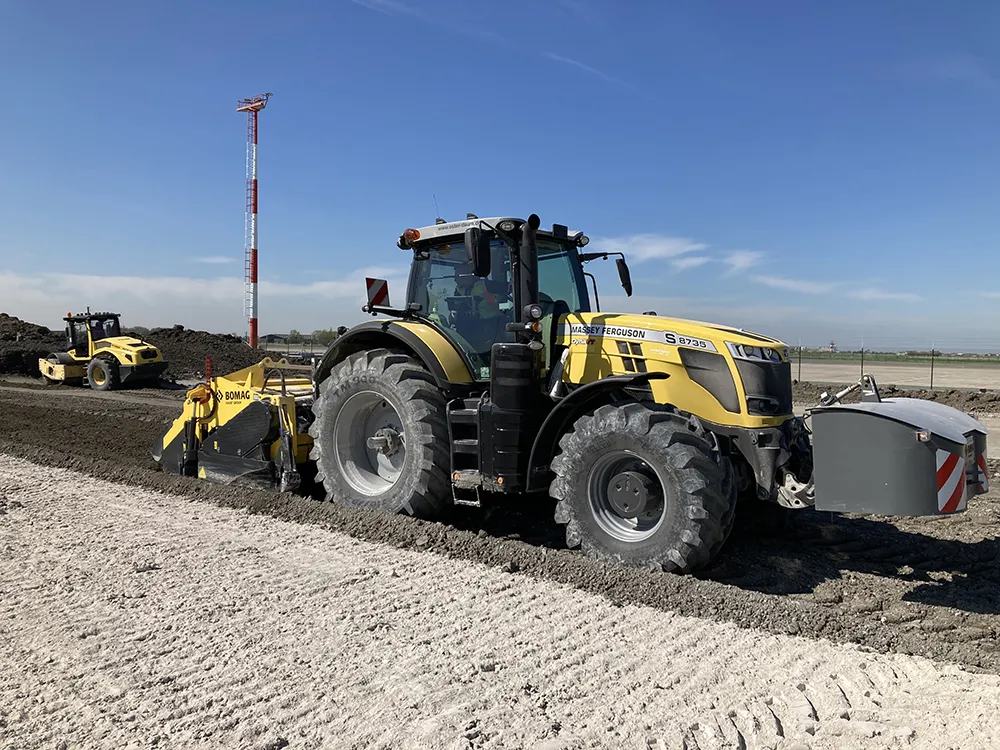
Soil stabilisation with the BOMAG RS 300 tractor-towed stabilizer.
In the Belgian city of Ostend, soil stabilisation with lime was required for 4,000 square metres of future industrial space. The Verhelst Aannemingen company was commissioned to carry out the work. The Ostend-based family business used the BOMAG RS 300 tractor-towed stabilizer for the first time.
The RS 300 achieves the best mixing results with milling depths of up to 50 cm. BOMAG's most powerful model is designed for use with tractors in the 300 to 450 hp class and, with a working width of 2.5 m, is also ideally suited to larger construction jobs.
Difficult terrain
The seaside resort of Ostend today was still a town in the sea in the Middle Ages and was located at the eastern end of Testerep Island. The island was separated from the land by a natural channel. Over time, this channel silted up, and Ostend was completely absorbed into the mainland. No wonder, then, that on the construction site east of the city centre, the water level is only just below ground level.
Anyone building here will almost always be confronted with deep, heavy, moist, non-load-bearing capacity soils. For work to begin on the new Rolbaanstraat site, therefore, the ground first needed to be improved. Lime was to be used to achieve soil stabilisation.
In situ soil stabilisation
Lime removes moisture from the soil. Stabilisation using the mix-in-place method can significantly improve the soil's load-bearing capacity, compaction properties and frost resistance. The subsoil is processed on site (Latin "in situ", English "mixed in place").
This eliminates the need to remove or replace non-load-bearing capacity soil and also saves the transport and disposal costs incurred by replacing the material. The mixing in of lime and the use of BOMAG machines (specially designed for soil stabilisation) is therefore a particularly economical option for subsoil improvement - not only on industrial sites but also in road and pavement laying.
In Ostend's industrial area, the binding agent was first applied with a spreader and then mixed in with the combination of a 350 hp tractor and a BOMAG tractor-towed stabilizer. On average, 18 kg of lime had to be applied per square metre at a mixing depth of 50 cm – almost 72 tons in total.
Soil full of surprises
The existing mixed soil was full of boulders ranging in size from 30 to 40 cm. No problem for the RS 300, as the largest BOMAG tractor-towed stabilizer currently on the market has a robust design: The skids are particularly thick and durable, and the mixing chamber is lined with replaceable wear plates. These 18 plates have a Brinell hardness of 540. The material installed in the mixing chamber is not only extremely hard but also particularly tough. Steel plates made of many thin layers are used to avoid cracking on the wear plates.
BOMAG's RS 300 tractor-towed stabilizer also has an optimum ratio between the diameter of the milling drum and the length of the cutting tool holders. In Ostend, there was not a single case of jamming of larger rocks between the milling drum and milling box. Such an incident could have resulted in long downtimes.
And despite the high number of boulders in the soil, only one double holder had to be replaced in two days of operation. This was caused by a heavy concrete block hidden in the ground, which was unfortunately very large.
Quick holder and cutting tool replacement
For the Verhelst team, however, this one tool change was no problem. With the crank handle, the rotor can be moved into position with minimal effort. Changing a complete holder is then particularly easy and takes very little time. BOMAG's RS 300 tractor-towed stabilizer is equipped with a quick change double-tool holder system and extra-large cutters The base of the holder system is screwed on. Each individual component can therefore be replaced quickly. The advantage: very short service times. The machine is quickly ready for use again.
A good, homogeneous mixing result
With its particularly durable, large cutting tools – the shaft diameter here is 25 mm – the RS 300 is ideally equipped for difficult, heavy soils, such as those in Ostend. The double cutters are particularly effective in strongly cohesive soils thanks to their clever shape and arrangement: The material is first cut up and then mixed particularly well. After just two passes, a very homogeneous mixing result was achieved.
Those responsible at Verhelst were positively surprised and impressed by the performance of the BOMAG RS 300 tractor-towed stabilizer.
More information on BOMAG tractor-towed stabilizers:
https://www.bomag.com/ww-en/machinery/categories/recyclers-stabilizers/rs-300-91021/
Content produced in association with Bomag


